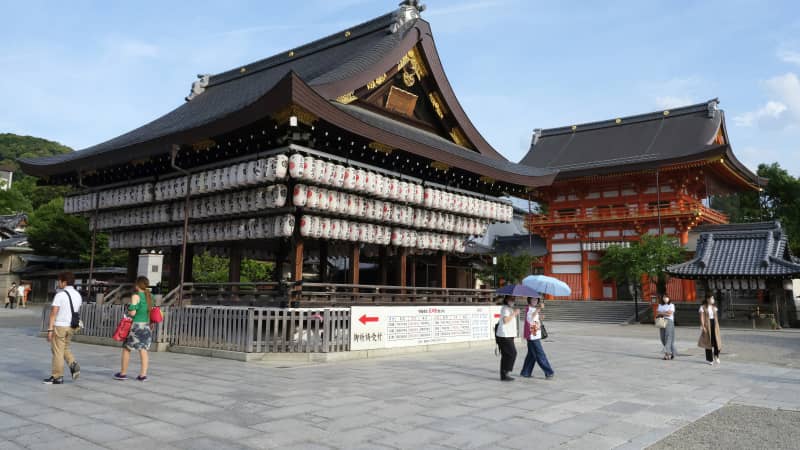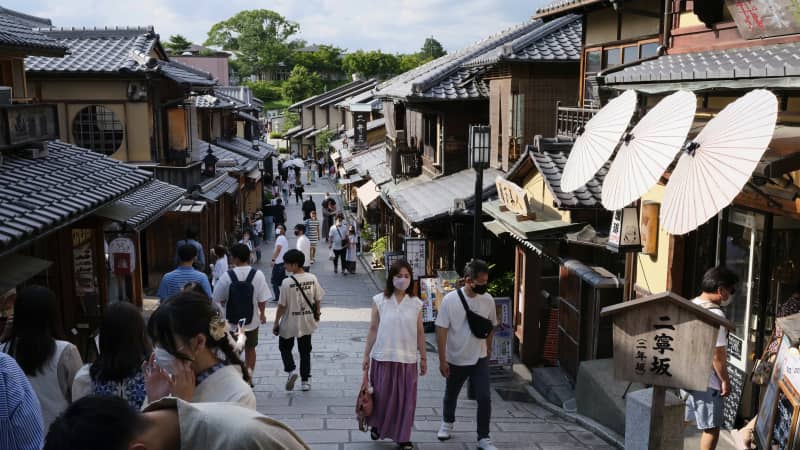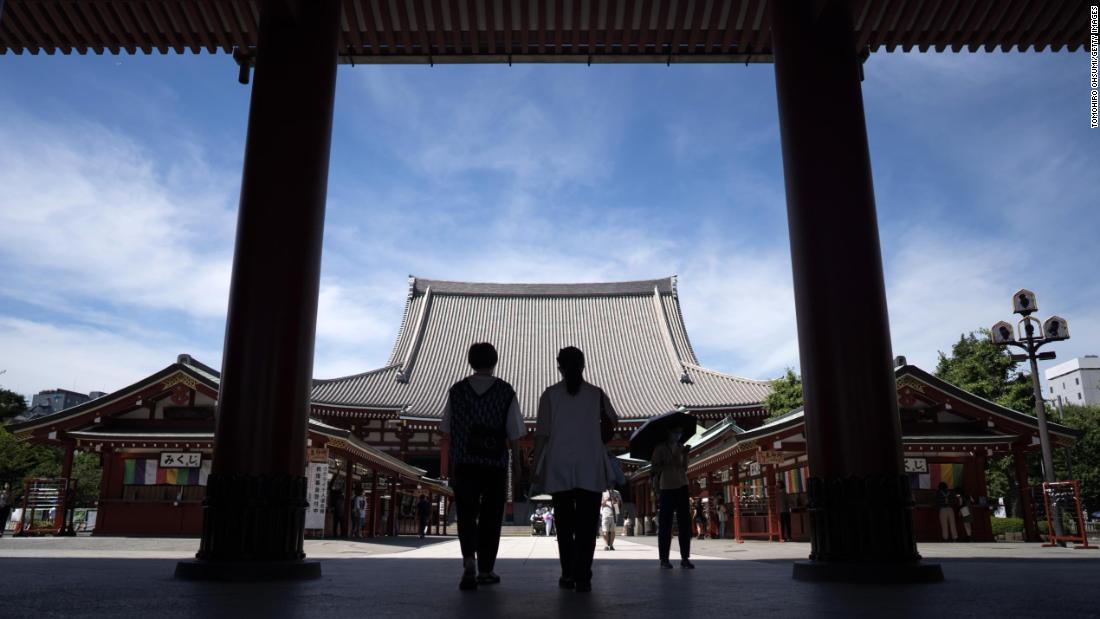So what’s causing the disparity? And why are travelers so slow to return to what has historically been a popular destination?
No safety in numbers
Although Japan is accessible again, the country currently only permits leisure tourists to come in organized groups rather than as individuals. For many in the West, who prefer spontaneity and don’t want to follow a strict itinerary, that issue was a dealbreaker.
“We don’t need to be babysat,” says Melissa Musiker, a New York-based public relations professional who used to travel regularly to Japan.
Musiker and her husband have been to Tokyo “about six times.” The pair had been planning to visit again in 2022 when they heard borders were reopening, but were frustrated by the restrictions and gave up.
Instead, they are opting for a new destination and going to South Korea for their vacation.
“We don’t want to quarantine. That was a huge factor,” Musiker says. “We just like to go and bum around and shop and eat expensive sushi.”
A preference for city visits over beach vacations tipped the scales in Seoul’s favor, as did her pandemic-born addiction to K-dramas.

The Yasaka shrine in Kyoto, Japan was usually surrounded by tourists and street vendors.
Kosuke Okahara/Bloomberg/Getty Images
Semi-open isn’t open
Japan’s not-fully-open policy doesn’t just apply to visas. The country still has mask rules in many areas, the group tours can be pricey, and Japan requires quarantine upon arrival, which make it a tougher sell.
Before the pandemic, many of Arry’s users were Asian travelers — living in Hong Kong, Taiwan, South Korea or Singapore — who visited Japan multiple times a year or could just hop over for a spontaneous long weekend. Since 2020, though, the company has had to go on hiatus.
“We didn’t know that it would take so long,” she says of what was supposed to be a short-term pause. “It has definitely been tough.”
The few members starting to get back in touch with Arry about making bookings, Tam says, are people who have been able to obtain business travel visas to Japan. Currently, this is the only way for non-citizens to get into the country as solo visitors, and some are taking advantage of the lack of crowds to get spots at restaurants they hadn’t been able to book before.
There is one bit of good news, though. Despite the challenges, many of Japan’s best eateries have been doing fine amid the pandemic.
“A lot of the restaurants we work with have a strong local base for clients,” Tam says. On the upside, that means these popular places will still be in business whenever foreign tourists are able to come.
According to the Immigration Services Agency, the two biggest markets for Japan tourism now are Thailand and South Korea. But “biggest” here is relative — about 400 people from each country have visited Japan since June. Only 150 came from the United States.

Before the pandemic, the narrow streets of Kyoto were packed with visitors.
Kosuke Okahara/Bloomberg/Getty Images
The China effect
In 2019, Japan’s single biggest tourism market was neighboring China, with 9.25 million Chinese visiting.
Now, though, China remains essentially sealed off from the rest of the world. It still has strict quarantine protocols in place for citizens and foreigners alike, bringing tourism to a standstill.

Tokyo Skytree is the tallest structure in Japan.
Rodrigo Reyes Marin/AFLO/Reuters
Hiroyuki Ami, head of public relations at Tokyo Skytree, says that it took until June 27 for the first international tour group to arrive at the observation deck. The group in question was comprised of guests from Hong Kong.
The financial hub city has strict restrictions including mandatory hotel quarantine for returning residents, but it has still been easier for tourists to travel from there than from mainland China.
“Before Covid, Ami says, “the largest number (of foreign visitors) was from China, but I haven’t seen them recently.” He confirmed that most of Skytree’s visitors in the past six weeks have been local Japanese on their summer holidays.
“Just because acceptance of tourists has resumed doesn’t mean we’ve been getting many customers from overseas,” he adds.
Waiting in the wings
“There is huge interest in going back to Japan,” says Tam, the Arry co-founder. “I think it’s going to pick up.”
CNN’s Kathleen Benoza in Tokyo contributed reporting.
